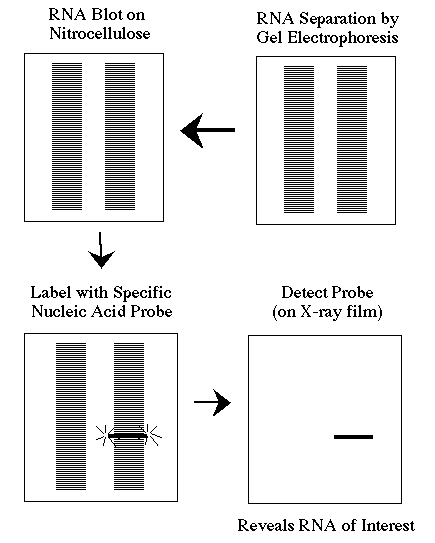
This is a brief overview of how a Northern blot (more formally called an RNA blot) is performed and what type of data you can obtain form one.

Northern blots allow investigators to determine the molecular weight of an mRNA and to measure relative amounts of the mRNA present in different samples.
1) RNA (either total RNA or just mRNA) is separated by gel electrophoresis, usually an agarose gel. Because there are so many different RNA molecules on the gel, it usually appears as a smear rather than discrete bands.
2) The RNA is transfered to a sheet of special blotting paper called nitrocellulose, though other types of paper, or membranes, can be used. The RNA molecules retain the same pattern of separation they had on the gel.
3) The blot is incubated with a probe which is single-stranded DNA. This probe will form base pairs with its complementary RNA sequence and bind to form a double-stranded RNA-DNA molecule. The probe cannot be seen but it is either radioactive or has an enzyme bound to it (e.g. alkaline phosphatase or horseradish peroxidase).
4) The location of the probe is revealed by incubating it with a colorless substrate that the attached enzyme converts to a colored product that can be seen or gives off light which will expose X-ray film. If the probe was labeled with radioactivity, it can expose X-ray film directly.
© Copyright 2002 Department of Biology, Davidson College, Davidson, NC 28036
Send comments, questions, and suggestions to: macampbell@davidson.edu